This article needs additional citations for verification .(May 2013) |
Juan de Tecto (born in Ghent, 1468; died in Honduras, 1526) was a Flemish missionary to the New World.
This article needs additional citations for verification .(May 2013) |
Juan de Tecto (born in Ghent, 1468; died in Honduras, 1526) was a Flemish missionary to the New World.
He graduated as D.D. in Paris, and was for several years professor of theology in the Sorbonne University, and afterward chaplain of Emperor Charles V, and guardian of a convent of Franciscans at Ghent. In 1522 Charles V, who was much attached to him, gave him permission to go to the New World. Tecto settled at Texcoco, where he founded missions for the natives and learned their language.
He accompanied Hernán Cortés in his expedition to Hibueras in 1525, and as, owing to the rebellion of Cristobal de Olid, no provisions were obtainable, Tecto, exhausted, fell behind the army, and was found later by a patrol leaning against a tree, where he had died of hunger. According to Bernal Diaz del Castillo, another source, he was sent by Cortés to report to the emperor about the conquest of Hibueras, and died at sea, off the coast of Spain.
Tecto is the author of two works: Primeros rudimentos de la doctrina Cristiana en lengua Mexicana (Rudiments of Christian Doctrine in the Mexican Language), a manuscript which was utilized by Fray Pedro de Gante for his Catecismo Mexicano (Mexican catechism); and Apología del bautismo administrate á los gentiles Mexicanos con sola el agua y la forma Sacramental, which is cited by Fray Juan de Torquemada in his Monarquía Indiana.
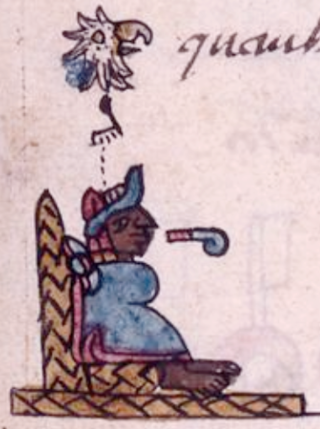
Cuauhtémoc, also known as Cuauhtemotzín, Guatimozín, or Guatémoc, was the Aztec ruler (tlatoani) of Tenochtitlan from 1520 to 1521, making him the last Aztec Emperor. The name Cuauhtemōc means "one who has descended like an eagle", and is commonly rendered in English as "Descending Eagle", as in the moment when an eagle folds its wings and plummets down to strike its prey. This is a name that implies aggressiveness and determination.

Hernán Cortés de Monroy y Pizarro Altamirano, 1st Marquess of the Valley of Oaxaca was a Spanish conquistador who led an expedition that caused the fall of the Aztec Empire and brought large portions of what is now mainland Mexico under the rule of the King of Castile in the early 16th century. Cortés was part of the generation of Spanish explorers and conquistadors who began the first phase of the Spanish colonization of the Americas.

Moctezuma Xocoyotzin, variant spellings include Motewksomah, Motecuhzomatzin, Montezuma, Moteuczoma, Motecuhzoma, Motēuczōmah, Muteczuma, and referred to retroactively in European sources as Moctezuma II, was the ninth Emperor of the Aztec Empire, reigning from 1502 or 1503 to 1520. Through his marriage with queen Tlapalizquixochtzin of Ecatepec, one of his two wives, he was also king consort of that altepetl.

Tenochtitlan, also known as Mexico-Tenochtitlan, was a large Mexican altepetl in what is now the historic center of Mexico City. The exact date of the founding of the city is unclear. The date 13 March 1325 was chosen in 1925 to celebrate the 600th anniversary of the city. The city was built on an island in what was then Lake Texcoco in the Valley of Mexico. The city was the capital of the expanding Aztec Empire in the 15th century until it was captured by the Spanish in 1521.
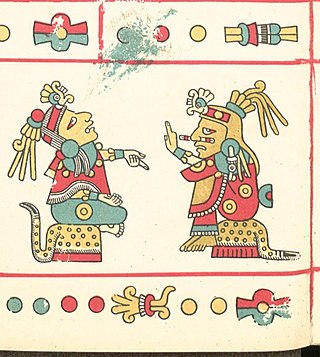
Ōmeteōtl is a name used to refer to the pair of Aztec deities Ometecuhtli and Omecihuatl, also known as Tōnacātēcuhtli and Tonacacihuatl. Ōme translates as "two" or "dual" in Nahuatl and teōtl translates as "god". The existence of such a concept and its significance is a matter of dispute among scholars of Mesoamerican religion. Ometeotl was one as the first divinity, and Ometecuhtli and Omecihuatl when the being became two to be able to reproduce all creation

Morris Swadesh was an American linguist who specialized in comparative and historical linguistics.
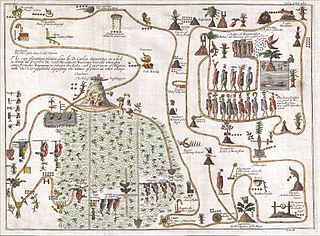
Aztlán is the ancestral home of the Aztec peoples. Astekah is the Nahuatl word for "people from Aztlan". Aztlan is mentioned in several ethnohistorical sources dating from the colonial period, and while they each cite varying lists of the different tribal groups who participated in the migration from Aztlan to central Mexico, the Mexica who went on to found Mexico-Tenochtitlan are mentioned in all of the accounts.

Bernal Díaz del Castillo was a Spanish conquistador, who participated as a soldier in the conquest of the Aztec Empire under Hernán Cortés and late in his life wrote an account of the events. As an experienced soldier of fortune, he had already participated in expeditions to Tierra Firme, Cuba, and to Yucatán before joining Cortés. In his later years he was an encomendero and governor in Guatemala where he wrote his memoirs called The True History of the Conquest of New Spain. He began his account of the conquest almost thirty years after the events and later revised and expanded it in response to the biography published by Cortés's chaplain Francisco López de Gómara, which he considered to be largely inaccurate in that it did not give due recognition to the efforts and sacrifices of others in the Spanish expedition.
Doña Isabel Moctezuma was a daughter of the Aztec ruler Moctezuma II. She was the consort of Atlixcatzin, a tlacateccatl, and of the Aztec emperors Cuitlahuac, and Cuauhtemoc and as such the last Aztec empress. After the Spanish conquest, Doña Isabel was recognized as Moctezuma's legitimate heir, and became one of the indigenous Mexicans granted an encomienda. Among the others were her half-sister Marina Moctezuma, and Juan Sánchez, an Indian governor in Oaxaca.

Mexican cinema dates to the late nineteenth century during the rule of President Porfirio Díaz. Seeing a demonstration of short films in 1896, Díaz immediately saw the importance of documenting his presidency in order to present an ideal image of it. With the outbreak of the Mexican Revolution in 1910, Mexican and foreign makers of silent films seized the opportunity to document its leaders and events. From 1915 onward, Mexican cinema focused on narrative film.
Fernando de Alva Cortés Ixtlilxóchitl was a nobleman of partial Aztec noble descent in the Spanish Viceroyalty of New Spain, modern Mexico; he is known primarily for his works chronicling indigenous Aztec history.
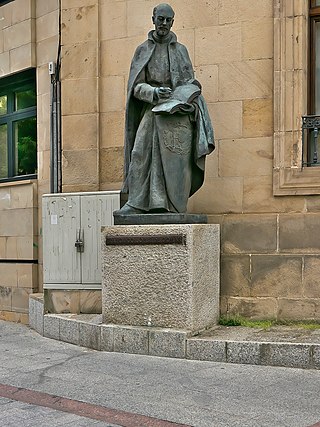
Francisco López de Gómara was a Spanish historian who worked in Seville, particularly noted for his works in which he described the early 16th century expedition undertaken by Hernán Cortés in the Spanish conquest of the New World. Although Gómara himself did not accompany Cortés, and had in fact never been to the Americas, he had firsthand access to Cortés and others of the returning conquistadores as the sources of his account. However other contemporaries, among them most notably Bernal Díaz del Castillo, criticised his work as being full of inaccuracies, and one which unjustifiably sanitised the events and aggrandised Cortés' role. As such, the reliability of his works may be called into question; yet they remain a valuable and oft-cited record of these events.

The Spanish conquest of the Aztec Empire, also known as the Conquest of Mexico or the Spanish-Aztec War (1519–21), was one of the primary events in the Spanish colonization of the Americas. There are multiple 16th-century narratives of the events by Spanish conquistadors, their indigenous allies, and the defeated Aztecs. It was not solely a contest between a small contingent of Spaniards defeating the Aztec Empire but rather the creation of a coalition of Spanish invaders with tributaries to the Aztecs, and most especially the Aztecs' indigenous enemies and rivals. They combined forces to defeat the Mexica of Tenochtitlan over a two-year period. For the Spanish, the expedition to Mexico was part of a project of Spanish colonization of the New World after twenty-five years of permanent Spanish settlement and further exploration in the Caribbean.
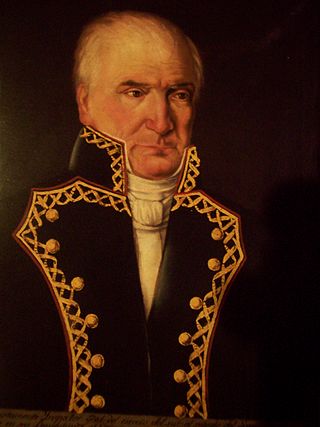
Carlos María de Bustamante Merecilla was a Mexican statesman, historian, journalist and a supporter of Mexican independence. His historical "work early initiated an important Mexican national tradition of searching out and publishing basic materials on the Indian past and its fate in the colonial period." His writings in the 1820s shifted "the antiquarian bias of creole patriotism...into the ideology of a national liberation movement."
John Henry Coatsworth is an American historian of Latin America and the former provost of Columbia University. From 2012 until June 30, 2019, Coatsworth served as Columbia provost. From 2007 until February 2012 Coatsworth was the dean of Columbia's School of International and Public Affairs (SIPA), and served concurrently as interim provost beginning in 2011. Coatsworth is a scholar of Latin American economic, social and international history, with an emphasis on Mexico, Central America, and the Caribbean.

Martín de Valencia was born in Valencia de Don Juan, in the bishopric of Oviedo, Spain, ca. 1474. He died Tlalmanalco, Mexico, 21 March 1534. He was a Spanish Franciscan missionary, leader of the Twelve Apostles of Mexico, the first group of mendicants in New Spain.
Francisco de Borja del Paso y Troncoso was an important Mexican historian, archivist, and Nahuatl language scholar. He "was and remains the outstanding major Mexican investigator of his era, a fully accepted figure in the international group of his peers."
Martín Cortés el Mestizo was the first-born son of Hernán Cortés and La Malinche, the conquistador's indigenous interpreter and concubine. He is considered to be one of the first mestizos of New Spain and is known as “El Mestizo.” His exact date of birth is not precisely known. Until the birth of Martín's younger brother, don Martín Cortés Zúñiga, to his father and his aristocratic second wife, Martín, son of La Malinche, was Cortés's only male heir, despite his illegitimate birth. He was recognized by his father, and was legitimized in 1529 by a bull of Pope Clement VII. Cortés's first marriage to Catalina Suárez was childless. Martín Cortés grew up in Spain but returned to the New World as a young man. He received a first level education and became Knight of the Order of Santiago, the highest status that could be achieved in Spain. During a time he became the page of Philip II of Spain. He accompanied Philip II to Flanders, to England and in the battle of San Quentin. In 1562 the king left all the towns and properties granted to his father. As heirs of Cortés, he and his brother were considered a threat to the vice-regal rule, and they were accused of participating in a plot to overthrow the viceroy. He was arrested and tortured and exiled to Spain, where they were exonerated in 1574. He lived there the rest of his life until his death.
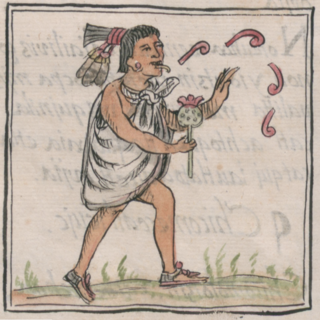
Nahuatl, Aztec, or Mexicano is a language or, by some definitions, a group of languages of the Uto-Aztecan language family. Varieties of Nahuatl are spoken by about 1.7 million Nahua peoples, most of whom live mainly in Central Mexico and have smaller populations in the United States.

Manuel Codorniu y Ferreras was a Spanish military physician, educator and publisher who served in the Senate (1841–1843) and in the Constituent Cortes (1854–1856) of his native country.